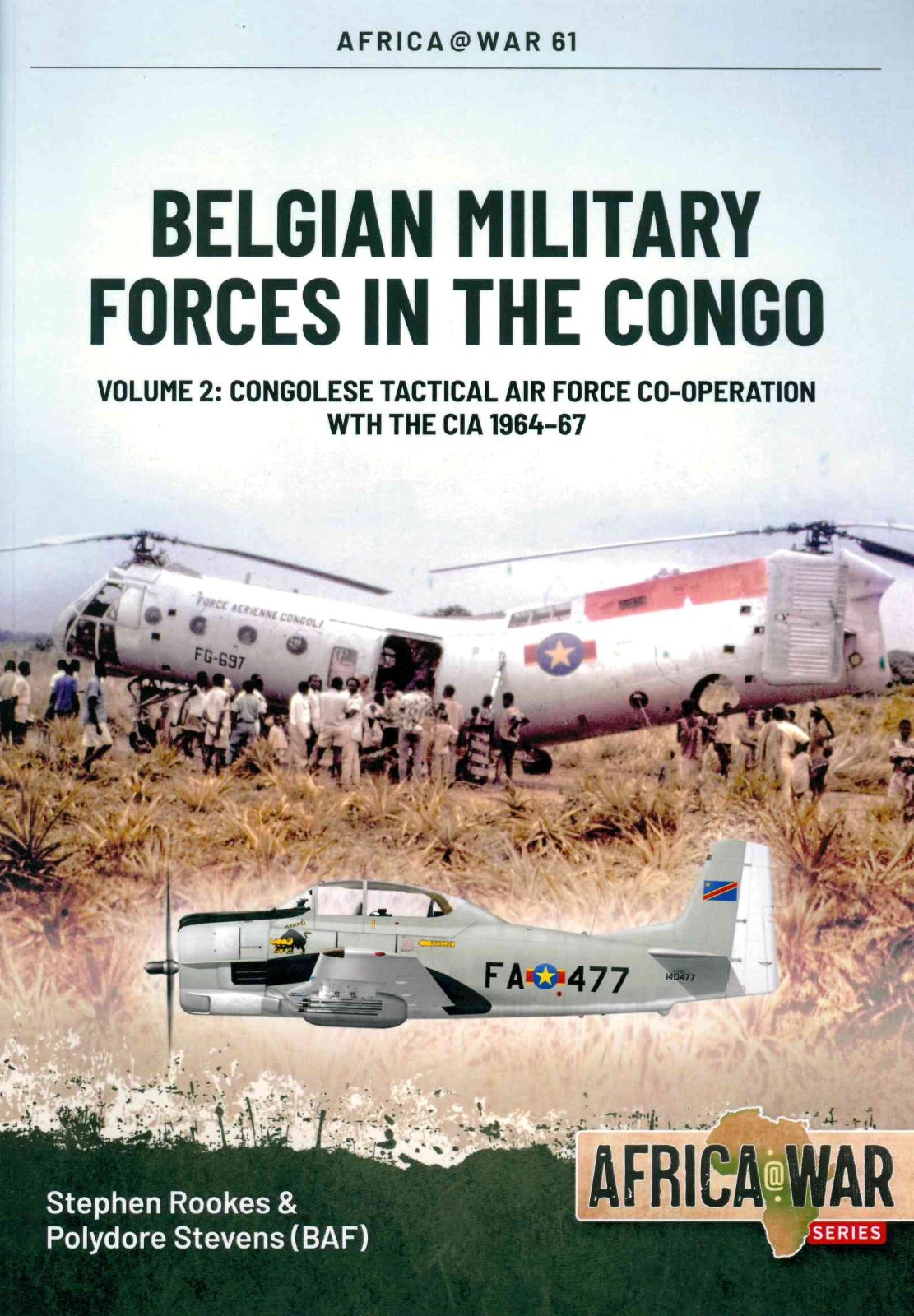Belgian Military Forces in the Congo, Volume 2 – Congolese Tactical Air Force Co-Operation with the CIA 1964-67
This is the second volume of the Belgian Military Forces in Belgium. The first book, “Belgian Military Forces in the Congo, Volume 1: The Force Publique, 1885-1960”, covered the events of Belgium’s 75 years in their Congo colony, leading to the official withdrawal of Belgian forces. Volume 2 picks up in 1964 after the newly independent Republic of the Congo-Kinshasa’s (later renamed Democratic Republic of the Congo-DRC) brief, bright future was overcome with internal factions, and the independence movement spreading through Africa (with several backed by Marxist forces). While Belgium wanted to remain hands-off, it quickly became apparent that they needed to step in to protect Belgian and Congolese interests.
The FATAC (La FATAC Force Tactique – the Congolese Tactical Air Force) were Belgian Air Force personnel who volunteered, or were volunteered, to fly non-combat missions in support of the DRC. The CIA was already supporting the DRC with Cuban-exiled pilots flying T-28s, C-47s and Vertol-Piasecki H-21s. This book is a history of the FATAC through extensive research and interviews with FATAC personnel. This book is a tribute to them, their challenges, creativity, and sacrifices. The appendix lists all FATAC personnel.
The book is a fascinating history of primarily the FATAC, and subsequently the CIA and the WIGMO (Western International Ground Maintenance Organization), complete with extensive photographs from the author’s personal collection, maps, detailed tables, and a color profile section composing the following eight chapters:
- The Creation of the FATAC
- The Aircraft of the FATAC
- BAKA – the FATAC’s Operational Base
- The Belgians are Back
- The Pacification of the Orientale Province, 1964-1965
- The Defence Units of the FATAC
- Mobutu’s Congo
- The FATAC and Mercenary Revolt of 1967
The second chapter, The Aircraft of the FATAC, is an amazing, concise history of the associated airframe, and the registration numbers flown by FATAC. Aircraft include the Douglas DC-3/C-47 Skytrain, and its lesser-known variant, at least to me, C-53 Skytrooper; the DC-4/C-54 Skymaster; Vetrol-Piasecki H-21 Workhorse/Shawnee. Other chapters deal with BAKA (Base Aérienne Kamina) and FATAC defense forces (Unités de Défence- UDéf).
The epilogue acknowledges that a lot of the history covered in this book is recalled by veterans in their 80s, recalling events 50 years earlier. While memories fade, there is access to more information than ever before to put together the puzzle on this little-known episode in history. The authors ask if it was worth it. For the thousands of Congolese hostages and civilians who owe their lives to Operations Ommegang, Dragon Rouge, and Dragon Noire, and numerous other mercenary forces (who later led a revolt), it was worth it.
Perhaps it is best summed up by the authors, “Those who left full of youthful enthusiasm, never complained about it. The events they experienced and participated in were an invaluable learning experience for them.” Furthermore,
“The ambiguous attitude of the Belgian government is easy to explain because it is very delicate for the ex-coloniser to intervene in the internal affairs of the former colony. In this respect, our country already had a bad reputation following the Belgian intervention of July 1960 and its role during the Katangese secession. Nonetheless, it is also clear that our government could not abandon to their fate, the many compatriots who were there facing danger of death.”
Modelers will find this this book useful with photographs of numerous aircraft from interwar aircraft to T-28s (flown by Cuban exiles), C-47s (flown by FATAC crews), USAF C-130s, and FATAC crewed Vertol-Piasecki H-21 “Flying Bananas”.
Stephen Rookes has provided the Africa@War series a concise, well researched and easy to read book to help fill in gaps in the military history of Central Africa. His love for aircraft is obvious and he works for the French Air Force as a researcher and lecturer at the Centre de Recherche de l’Armée de l’air et de l’espace (CREA) in Salon-de-Provence, France. Now a French national, he was born in England and has six other books in the @War series, including the first volume of this series, and “Ripe for Rebellion: Political and Military Insurgency in the Congo, 1960-1965.
Joined in this book is Senior Captain Polydore Stevens, born and raised in the Belgian Congo, who served in the Belgian Air Force from 1969 to 1993. Free time after his retirement led to researching aviation history, particularly Central Africa, which led to his return to the Democratic Republic of Congo, ultimately finding the wreck in 2010 of one of the H-21s referenced in this book.
Profuse thanks to Casemate (https://www.casematepublishers.com) and IPMS/USA for providing the review sample.







Comments
FATAC in Congo
Seems to be t based upon a book: We waren er bij from Dakota Museum Melsbroek Belgium
Add new comment
This site is protected by reCAPTCHA and the Google Privacy Policy and Terms of Service apply.
Similar Reviews